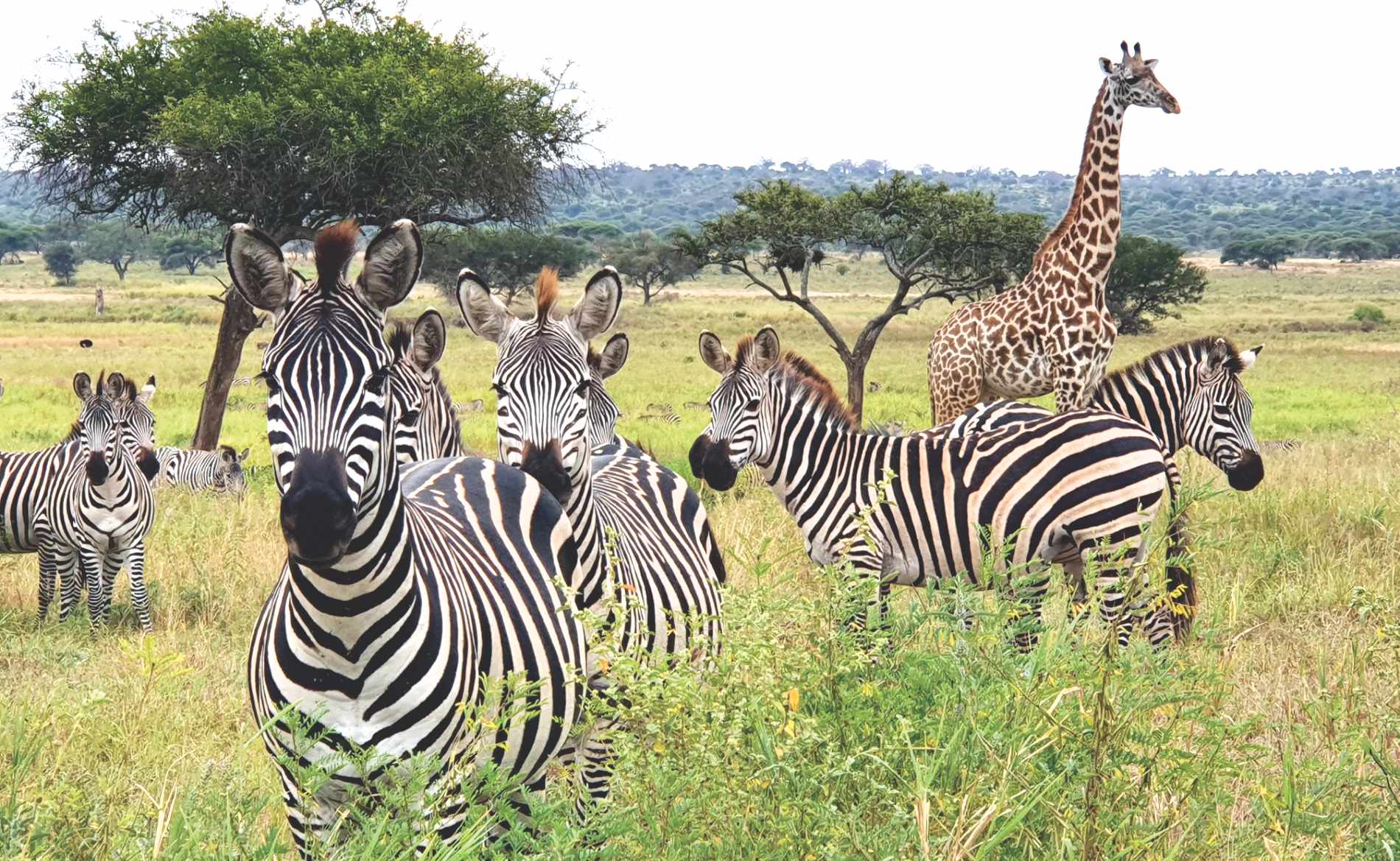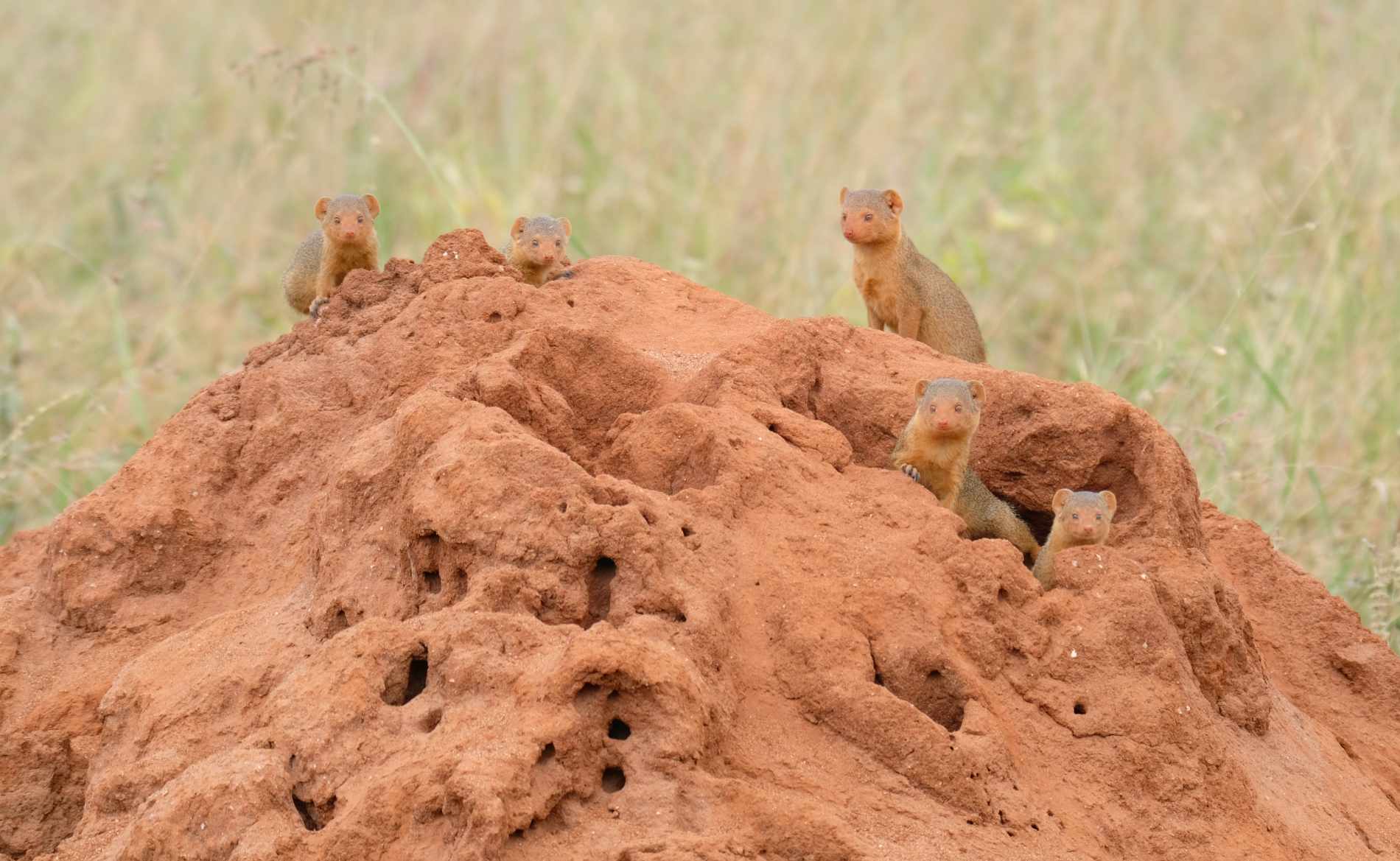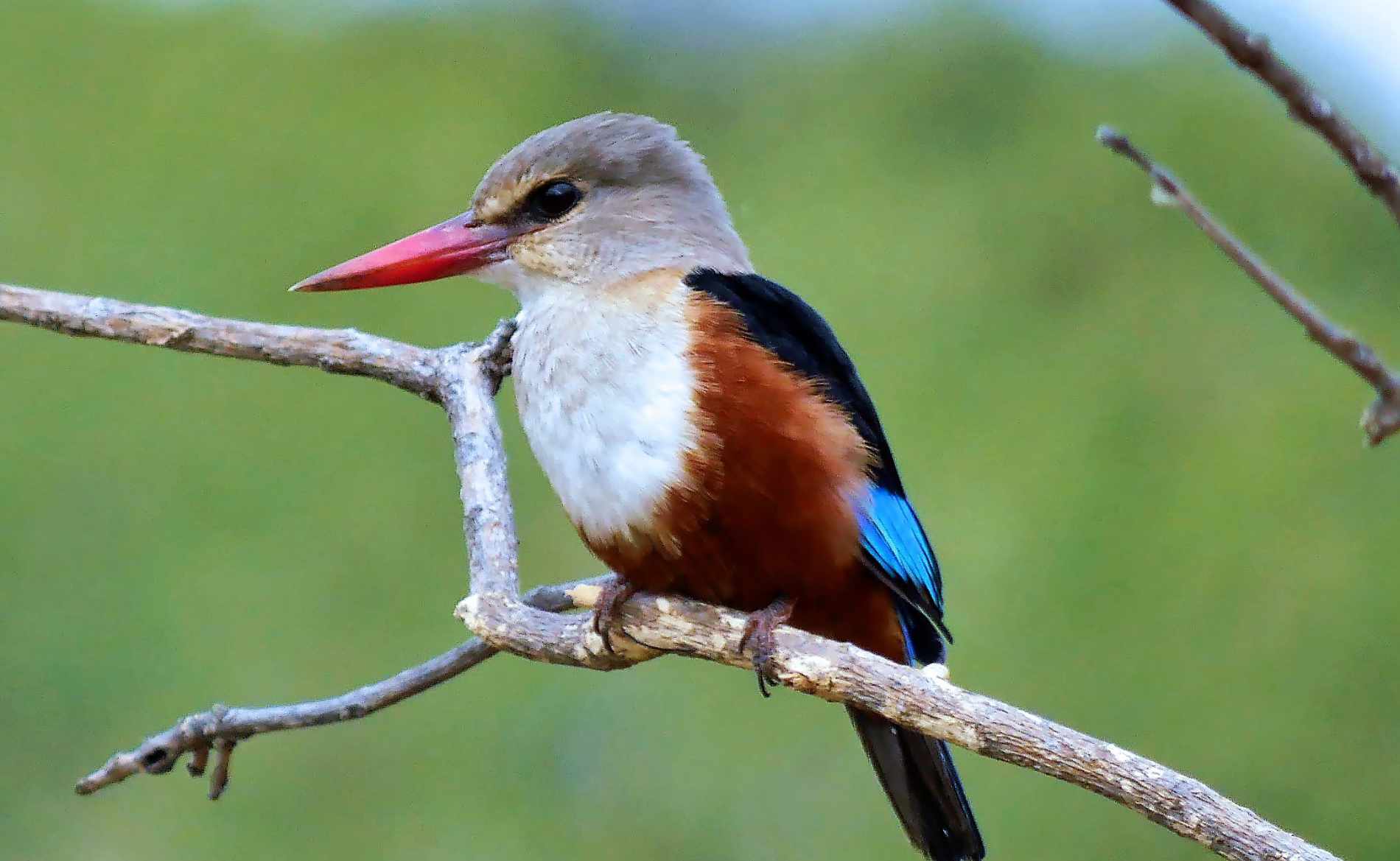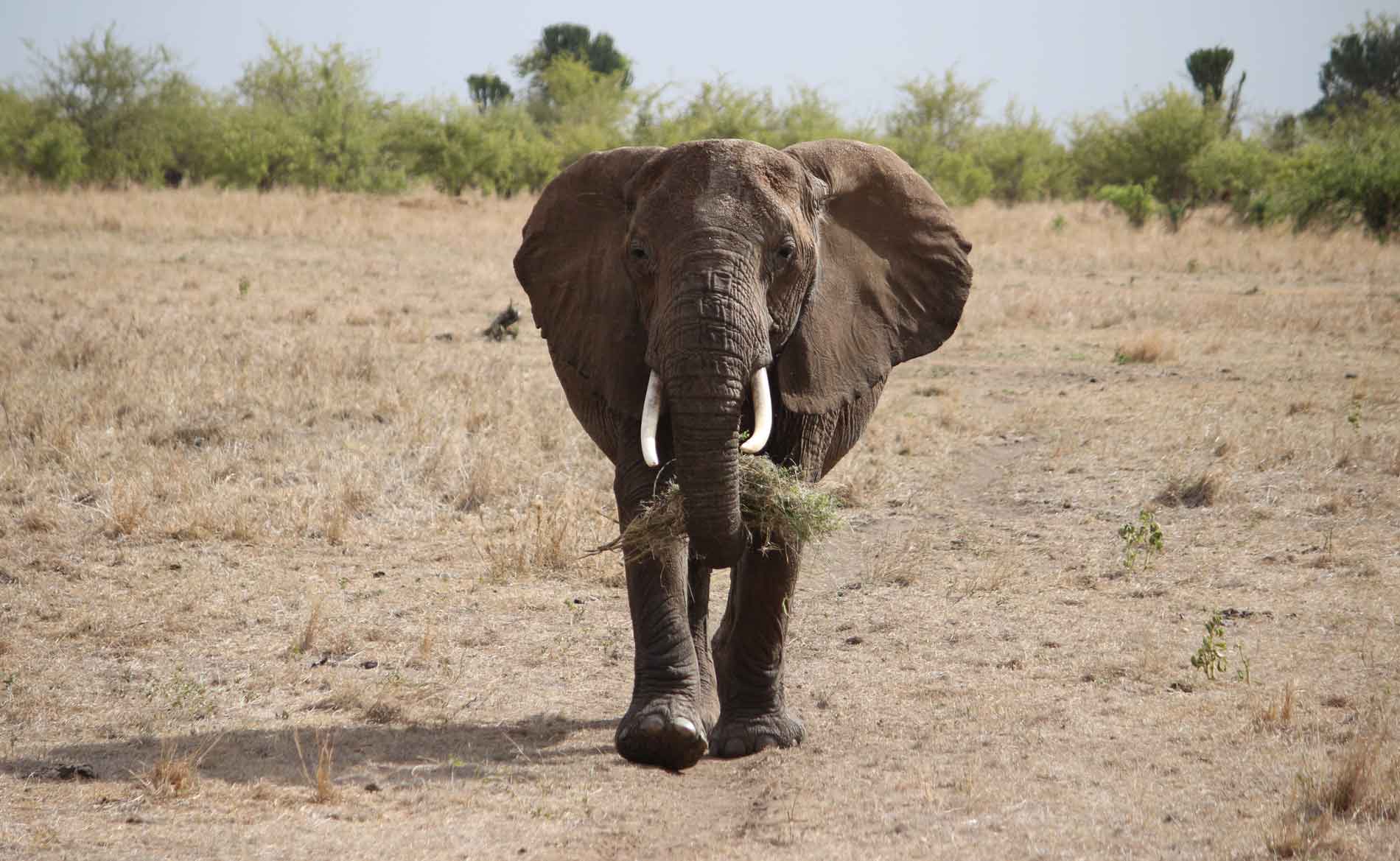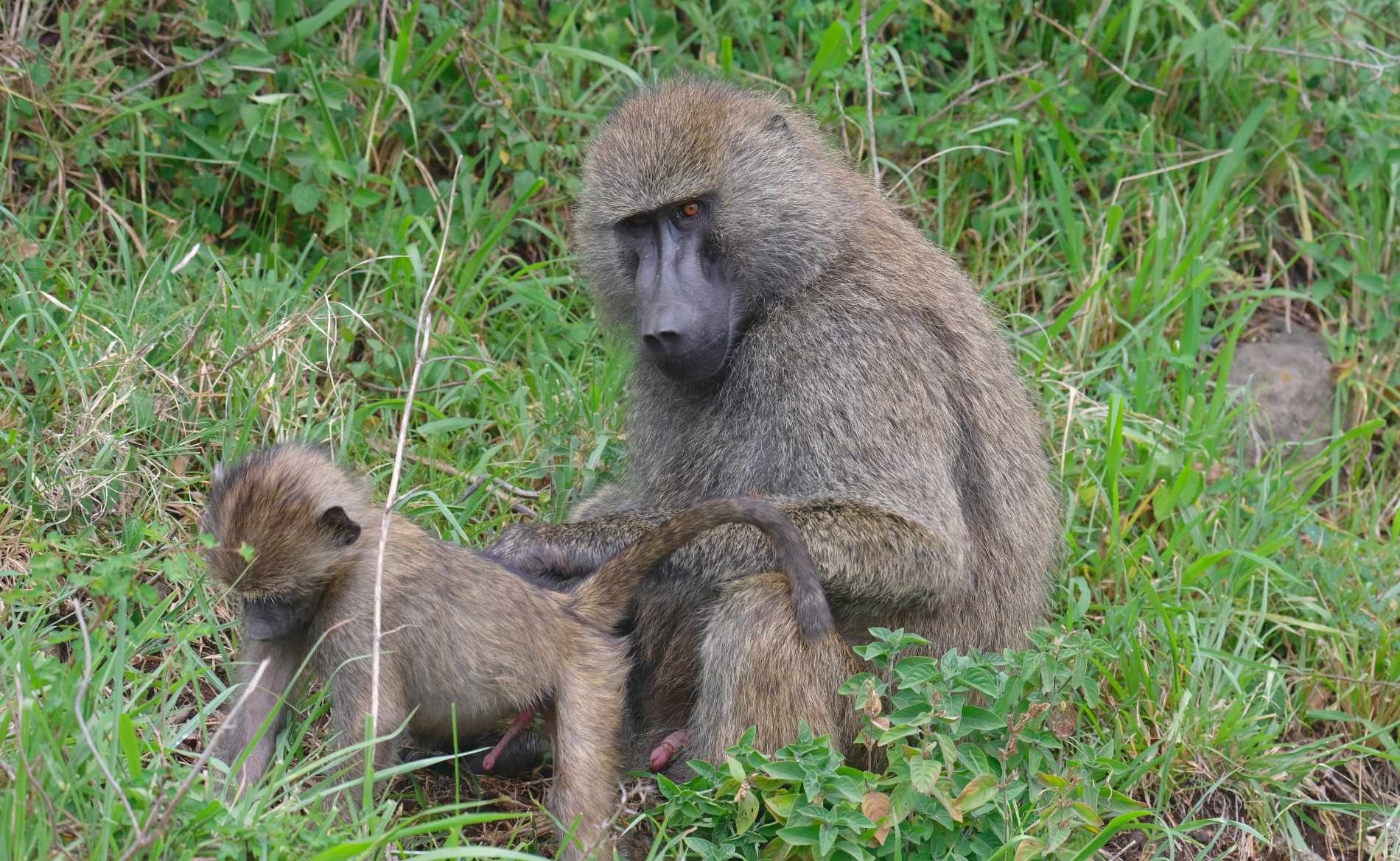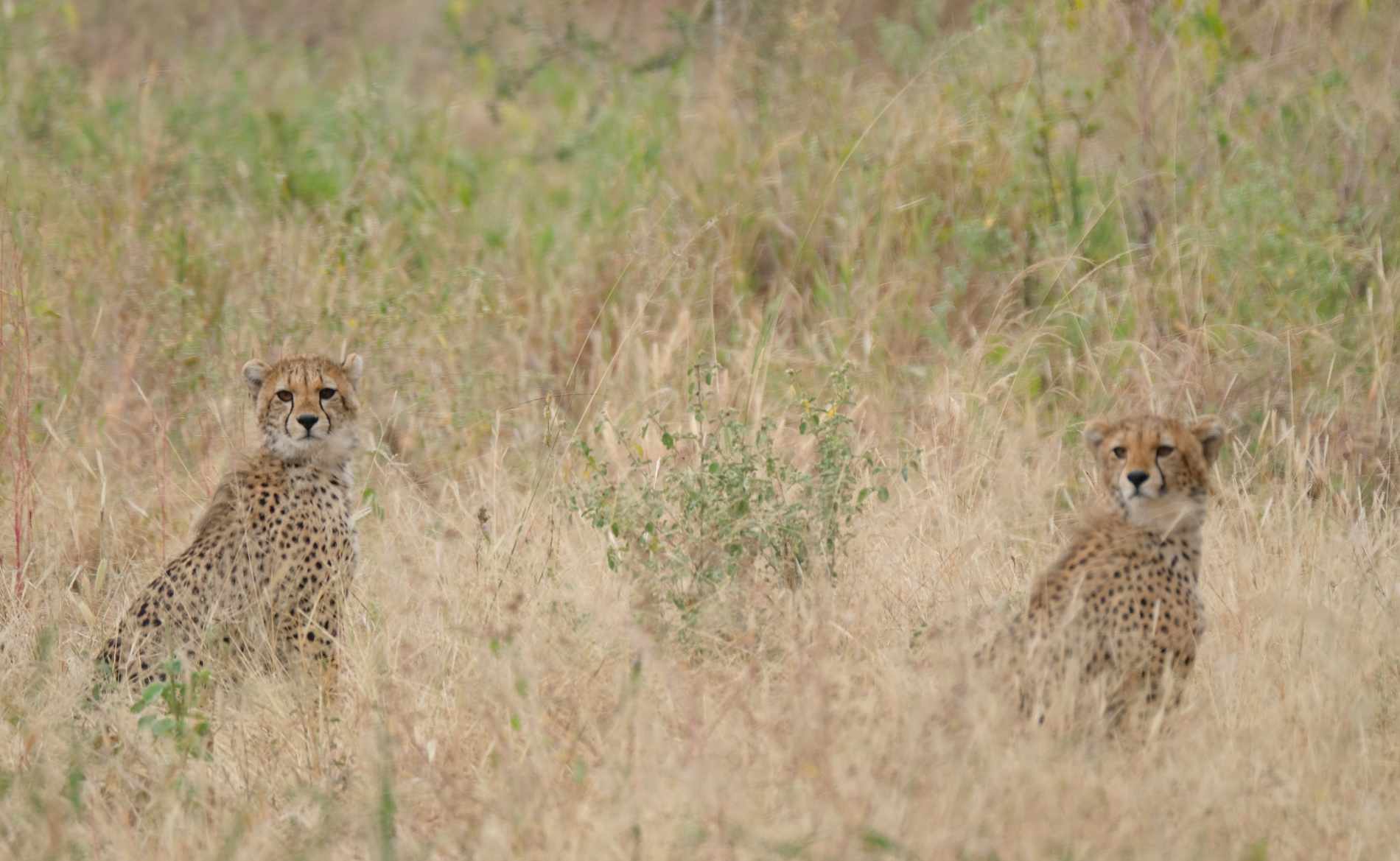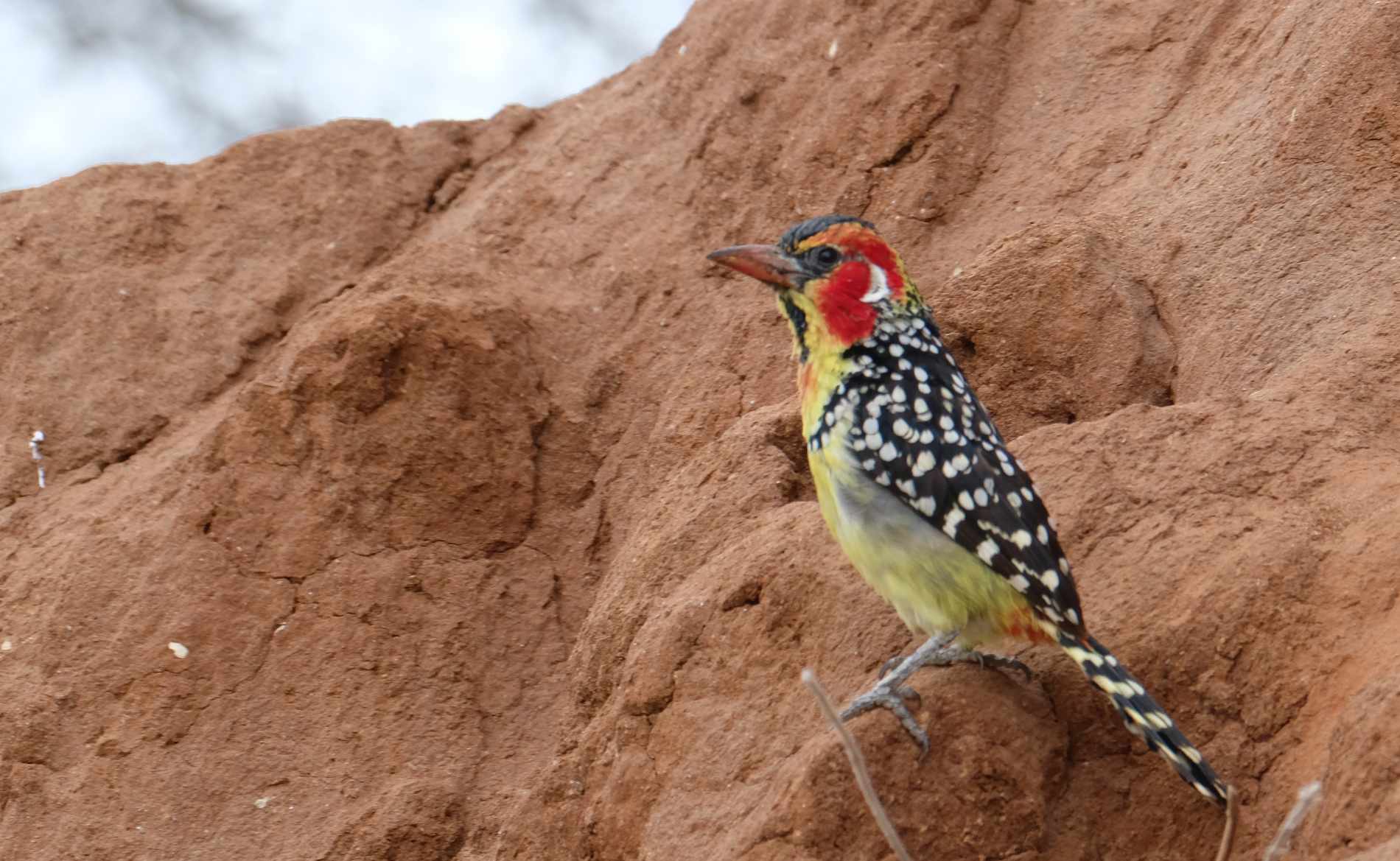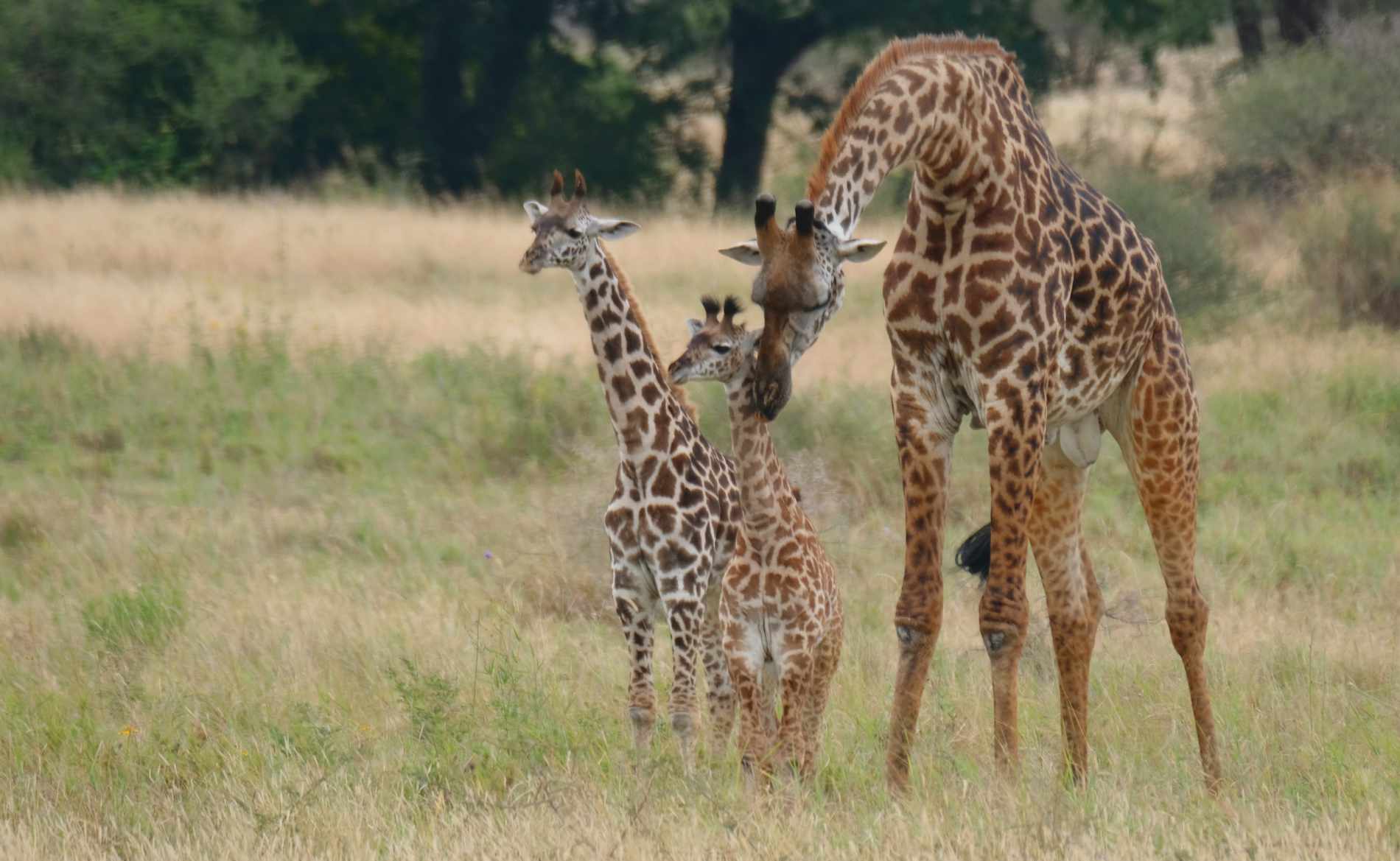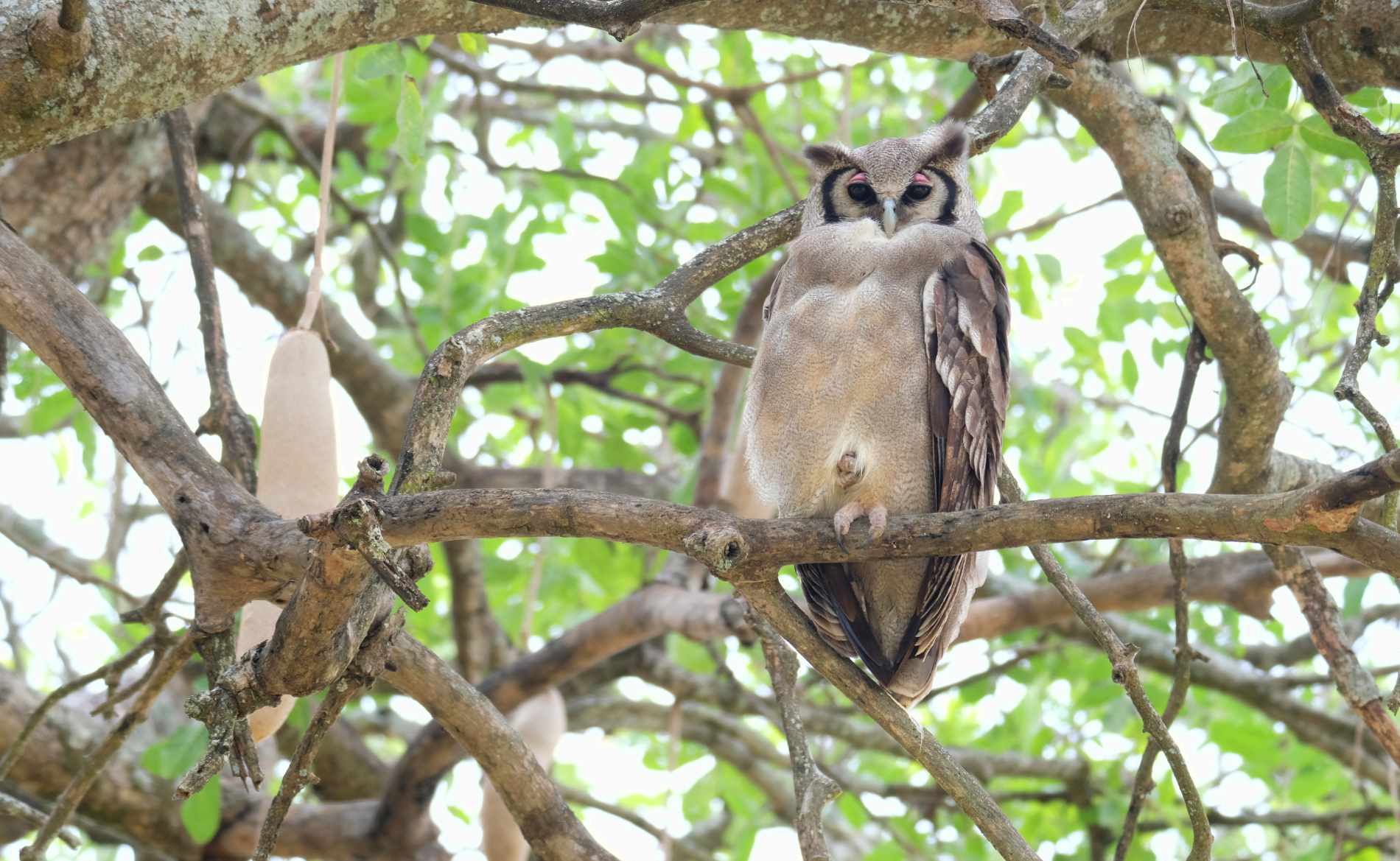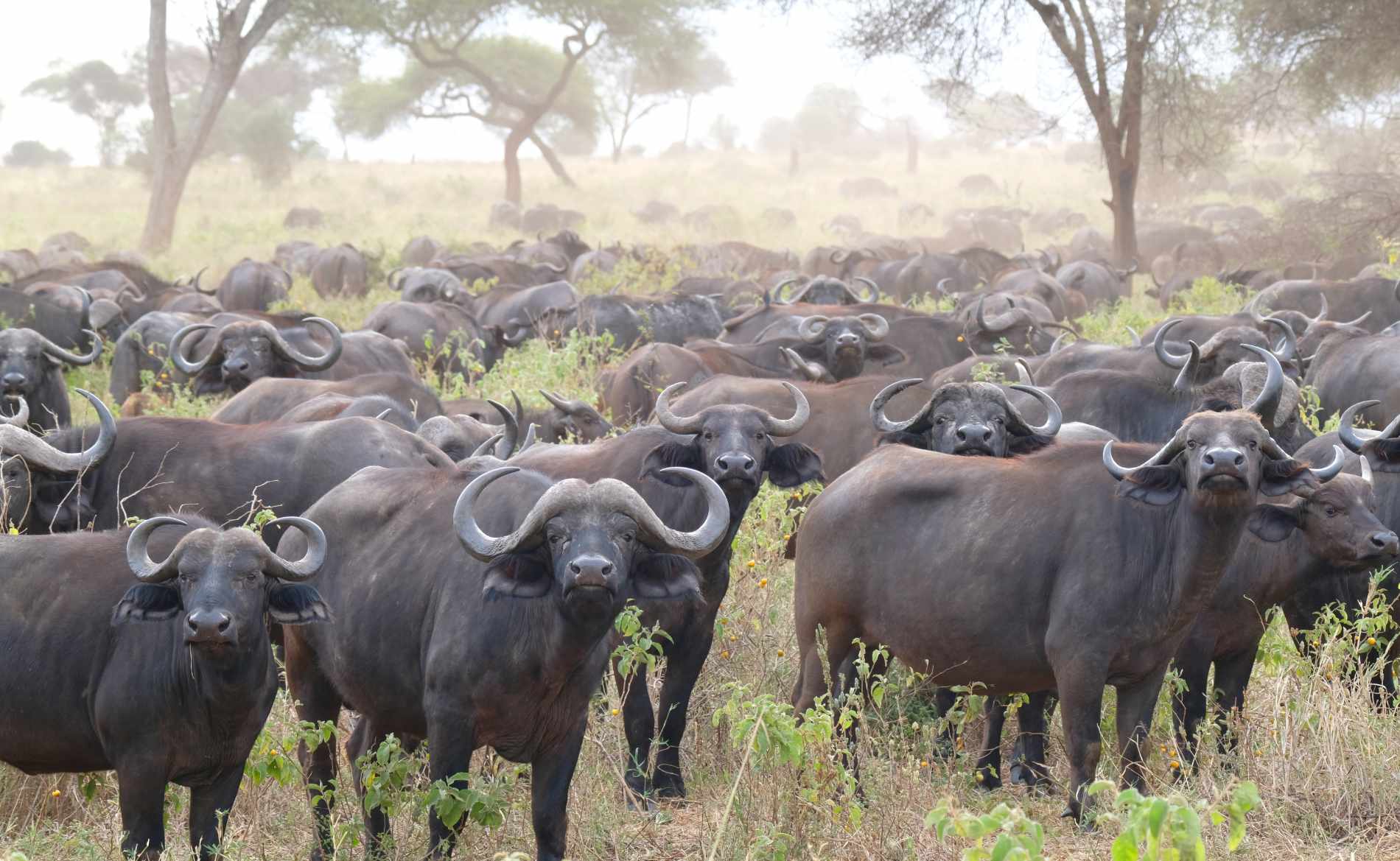Tarangire National Park: Huge herds of elephants, thick baobab trees and the Tarangire River lifeline
Facts Tarangire National Park:
- Founded in 1970
- Home to the largest elephant population in Tanzania
- There are several lodges of different categories and a public campground in the national park
- Size of Tarangire National Park 2,850 km2 = slightly larger than Luxembourg
- Size of Tarangire ecosystem 20,500 km2 = the size of Israel
Getting there from Arusha:
- 115 km = a good two hours’ drive by safari car
Best time to visit:
- Tarangire National Park can be visited all year round and is a great place to explore
- In the dry season from June to October, Tarangire has the highest concentration of wildlife outside of Ngorongoro and Serengeti. The animals also tend to stay close to the Tarangire River and are therefore easier to spot
- From November to May, the landscape is greener due to the rainfall and there are many migratory birds to be seen
Highlights Tarangire National Park:
- Marvel at a herd of elephants in motion at close range or watch them splash themselves with mud to cool off and protect their skin
- Watch giraffes as they use their long tongues to skillfully eat the leaves from the thorny acacias
- Watch zebras, wildebeest or other animals drinking at the waterhole
- Photographing a thick baobab tree against a unique backdrop
Tarangire National Park is famous for its many baobab trees and its large herds of elephants. The two giants live together in the ecosystem, which is ten times the size of the national park itself. The gray pachyderms are present in large numbers due to sufficient food and water supplies – it is estimated that up to 2,000 elephants stay in Tarangire National Park during the dry season. They also migrate here from neighboring ecosystems to search for underground watercourses in the Tarangire River bed, which always carries water, even during periods of drought. The giant baobab trees grow up to 25 meters high and have a thick trunk of up to 12 meters in diameter. The baobab tree is also known as the tree of life, as it can live for up to 2,500 years. The impressive giants are also used by humans and animals in a variety of ways. The shade of the mighty treetop is a great place to rest in the midday heat. The fibers, roots and other parts are used in a variety of ways to make ropes, baskets, dye and even clothing. The fruits of the tree, which only grow for the first time after 20 to 25 years, contain up to ten times more vitamin C than an orange and are also rich in fiber, antioxidants and minerals. During the ripening process, the tree draws water from the fruit until the shell breaks open and the seeds fall to the ground. Baobab is considered a superfood not only in the tree’s native country, but also worldwide. In the dry season, animals eat the unripe fruit as a source of water. But it’s not just the fruit that contains water; it is estimated that the trunk of a baobab can store up to 140,000 liters of water, which it slowly uses up during periods of drought. To do this, the trunk can expand and contract by several centimetres as required. The African elephants sometimes pose a threat to it. Even though they are significantly smaller than the tree at around 3 meters in size, the pachyderms, which can weigh up to 6 tons, can drill holes in the bark of the trees with their powerful tusks. They then peel off the bark and reach the inside of the baobabs. They chew the juicy wood to quench their thirst during the dry season. Once their thirst has been quenched, a herd of elephants leaves a baobab with large holes. If the damage is too great, the tree cannot recover and dies. This in turn means that fewer animals will be able to feed on the mighty water reservoir in the next dry season. Another good example of the “Circle of Life”.
Of course, Tarangire National Park is also home to many other animals, such as waterbuck, zebra, wildebeest, giraffe, impala, dik dik, eland and oryx antelope. In the dry season between June and October, Tarangire is home to considerably more wildlife than in the rainy season thanks to the Tarangire River, which always carries water – at least underground. Wildebeest, elephants, zebras, gazelles, buffalo and more from the entire ecosystem migrate into the national park in a small migration and stay close to the Tarangire River. There are also plenty of predators to be seen, especially lions and hyenas are regularly spotted in Tarangire. Rarely, and especially in the late evening hours during a night game drive or if you are staying overnight in the park, leopards can also be seen. Cheetahs are very rarely seen in Tarangire, there are only a few animals and the hiding places are almost endless.
In addition to the elephants and baobabs mentioned at the beginning, termite mounds dominate the landscape. It is interesting to observe the differently colored hills, depending on the nature of the earth, during a game drive. The landscape in Tarangire is very diverse and ranges from grassland to open tree veld and forest to hills and rocks. The picnic spots are in just the right place, for example with a view of the Tarangire River, where you can watch animals drinking or cooling off at almost any time of the year. Bird lovers will also get their money’s worth with around 550 different bird species. Particularly common sightings include black-crowned kittiwakes, red-billed hornbills, southern hornbills, fork-billed rakes, weaverbirds, herons, eagles and other birds of prey as well as the large ostriches.

